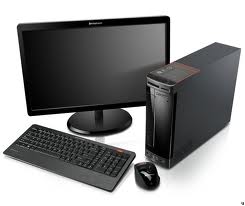Malacca
St. Pauls Church at the top of the hill, surrounded by the fort. At the left: Malacca river.
Francis Valentijn (1726)
Malacca is about 150 kilometer south of Kuala Lumpur. Across the North-South expressway you'll be within two hours in Malacca. In the middle of the center are several hotel, who will offer you a "promotion rate". IA room with breakfast and taxes will offered to you for about RM 100. So why wouldn't we stay just one night in this beautiful, historic city? Just one night, that's enough, there's so much to see in the rest of Malaysia!
Malacca had a lot of conquerors in the past century's: Chinese, Portuguese, Dutch en English. In the past the city was strategic place at the border of the Strait of Malacca. It was a major port along the spice-route, and its harbor bristled with the sails and masts of Chinese junks and spice-loaded vessels from all over world. Also was traded: silk and porcelain from China; textiles from Gujarat and Coromandel in India; camphor from Borneo; sandalwood from Timor; nutmeg, mace, and cloves from the Moluccas, gold and pepper from Sumatra; and tin from western Malaysia.
The strong wind was always blowing from the right position for the sailors and Malacca was a safe place to be, when the sailors came ashore. No wonder that they took this city for provision. Malacca became important for all who wanted to rule the Strait of Malacca. And...that Strait was so important for the spice-route. That's why Malacca had since 1400 so much occupiers and could grow to a world wide trade center.
The strong wind was always blowing from the right position for the sailors and Malacca was a safe place to be, when the sailors came ashore. No wonder that they took this city for provision. Malacca became important for all who wanted to rule the Strait of Malacca. And...that Strait was so important for the spice-route. That's why Malacca had since 1400 so much occupiers and could grow to a world wide trade center.
In 1511 Malacca was conquered by the Portuguese. The Portuguese came to the East to capture the spice trade. Led by Alfonso de Albuquerque. The Portuguese failed to maintain the glory and prosperity of Malacca because of restrictive policies, competition and wars. The Portuguese ruled Malacca from 1511 to 1641.
On the incline of the hill (St. Paul's Hill) they built a fort: "A Famosa". Later this was extended, so that the hill was surrounded by the the wall of the fort. Inside these walls were two palaces, a castle, a meeting room for the Portuguese Council and there were five churches. Unfortunately, the only thing that's left, is the "Porta de Santiago", a gate without a wall that leaded to the fort.
After a siege of 7 months the Dutch of the VOC (the Dutch East India Company) conquered the fort in 1641. At that time Malacca wasn't so rich and prosperous anymore. After the conquest by the VOC the Dutch could start rebuilding the fort. Walls were repaired, bastions got another name and they digged canal around the fort with a drawing bridge. At the summit of its power Malacca had a garrison of 550 Dutchmen and 50.000 inhabitants.
Despite all the new buildings the Dutch built, Malacca trade quickly declined after their conquest. The Dutch had only two goals: safety of the spice-route and elimination of the competitors.
In August of the year 1795 the English (East India Company) occupied Malacca. Holland had in his region in Europe troubles with the French (Napoleon), who were expending their borders. Holland didn't care for such an unimportant outpost, which Malacca was in this period. It's a great pity for the history of Malacca, that the English decided then to blow up the walls and gates.
On the incline of the hill (St. Paul's Hill) they built a fort: "A Famosa". Later this was extended, so that the hill was surrounded by the the wall of the fort. Inside these walls were two palaces, a castle, a meeting room for the Portuguese Council and there were five churches. Unfortunately, the only thing that's left, is the "Porta de Santiago", a gate without a wall that leaded to the fort.
After a siege of 7 months the Dutch of the VOC (the Dutch East India Company) conquered the fort in 1641. At that time Malacca wasn't so rich and prosperous anymore. After the conquest by the VOC the Dutch could start rebuilding the fort. Walls were repaired, bastions got another name and they digged canal around the fort with a drawing bridge. At the summit of its power Malacca had a garrison of 550 Dutchmen and 50.000 inhabitants.
Despite all the new buildings the Dutch built, Malacca trade quickly declined after their conquest. The Dutch had only two goals: safety of the spice-route and elimination of the competitors.
In August of the year 1795 the English (East India Company) occupied Malacca. Holland had in his region in Europe troubles with the French (Napoleon), who were expending their borders. Holland didn't care for such an unimportant outpost, which Malacca was in this period. It's a great pity for the history of Malacca, that the English decided then to blow up the walls and gates.
Augustine Earle (1828)
The highlights of Malacca are in short distance of each other. Just a little walk. They're concentrated around St Paul's hill (see the old drawing at the top). That's where the fort was situated. It's nearby the Malacca-river, which was so important in the old days.























































